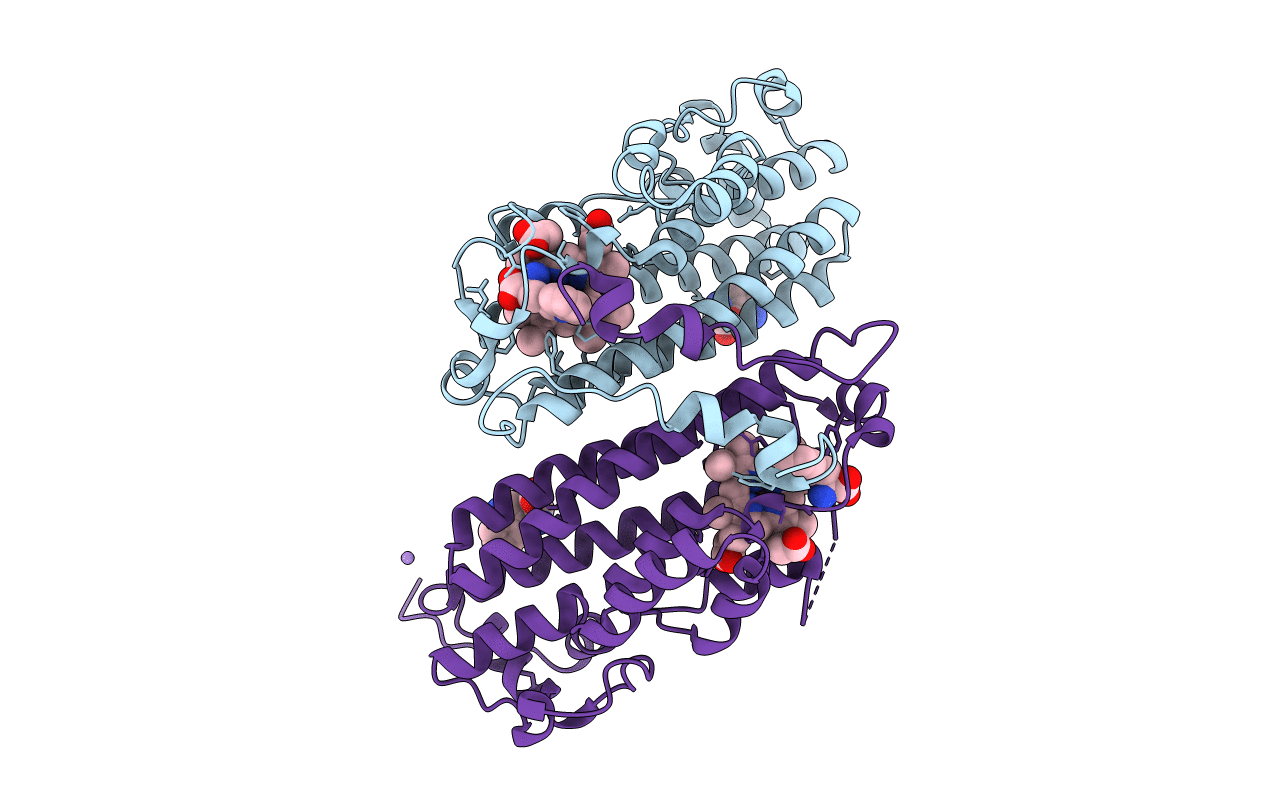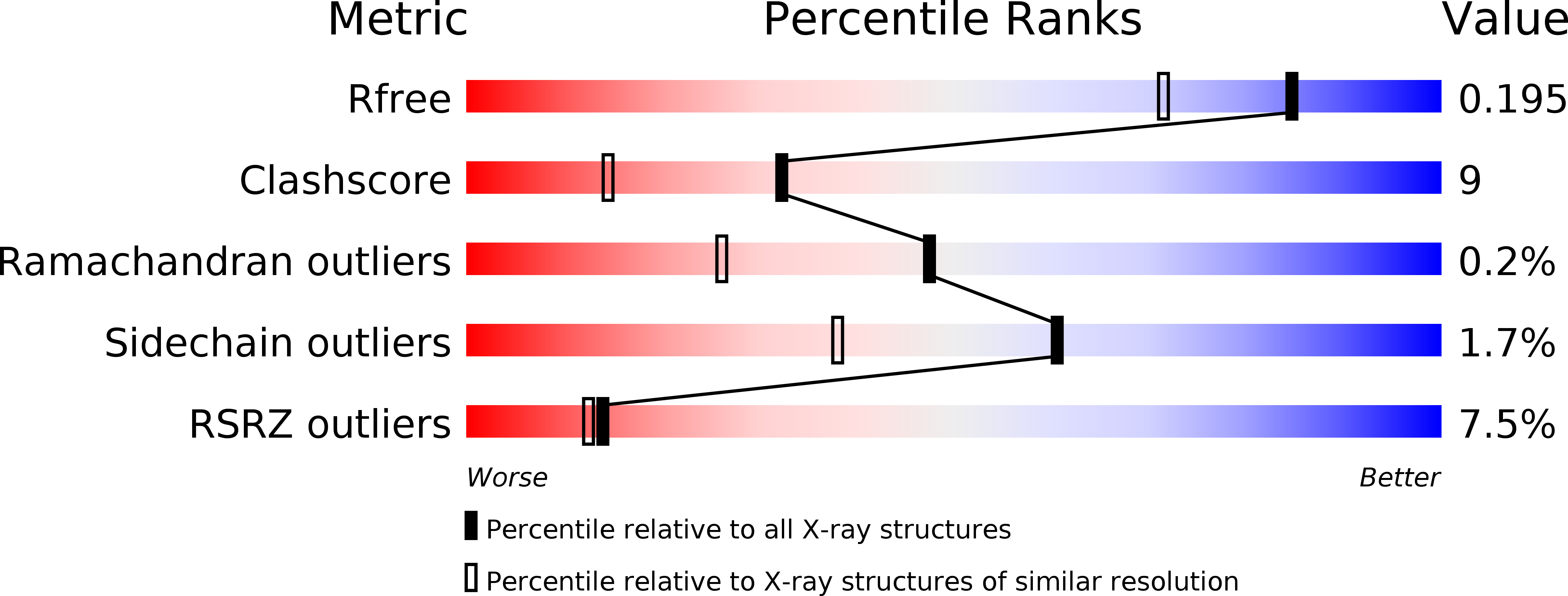
Deposition Date
2006-11-14
Release Date
2006-12-19
Last Version Date
2023-08-30
Entry Detail
PDB ID:
2NW8
Keywords:
Title:
Crystal Structure of Tryptophan 2,3-dioxygenase (TDO) from Xanthomonas campestris in complex with ferrous heme and tryptophan. Northeast Structural Genomics Target XcR13.
Biological Source:
Source Organism:
Xanthomonas campestris pv. campestris (Taxon ID: 340)
Host Organism:
Method Details:
Experimental Method:
Resolution:
1.60 Å
R-Value Free:
0.18
R-Value Work:
0.17
R-Value Observed:
0.17
Space Group:
P 31 2 1


